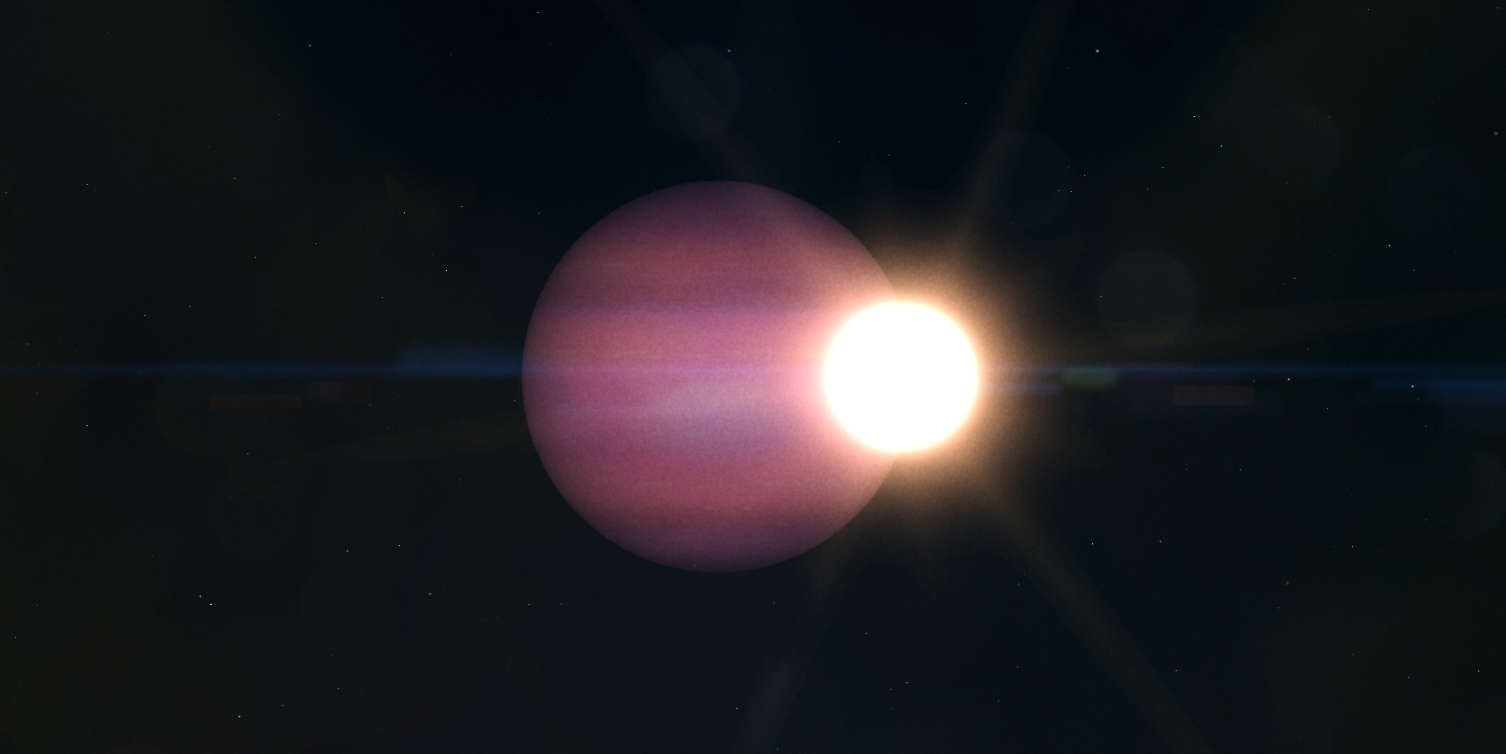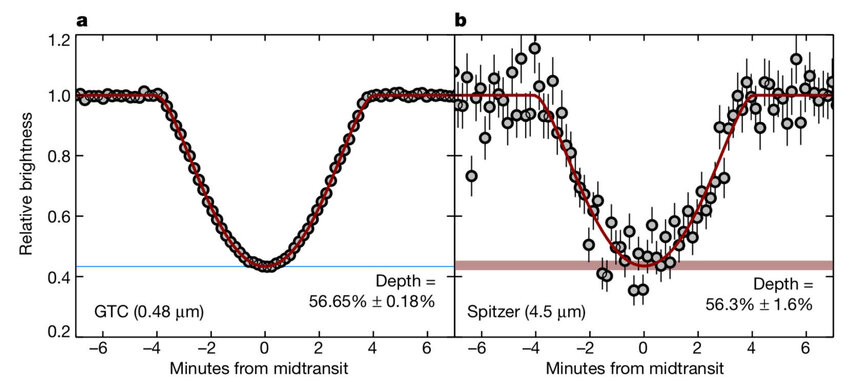Create a free profile to get unlimited access to exclusive videos, sweepstakes, and more!
Astronomers find the first intact planet orbiting a white dwarf… and it's far bigger than its star!

Astronomers have just announced they have found the first intact planet orbiting a white dwarf*, the dead core of a star that was once much like the Sun.
There are lots of cool things about this discovery, but one of the weirdest is that the planet is bigger than the star!
But then, it almost has to be. Here's how this works.
WD 1856+354 (let's just call it WD 1856) is a white dwarf about 80 light years away in the constellation of Draco. It may be part of a triple system, orbiting a pair of stars called G 229-20, although it's not clear if it actually orbits them or is coincidentally close to them in the sky.
It was observed by TESS, the Transiting Exoplanet Survey Satellite, which is scanning the whole sky looking for planets orbiting other stars. If we happen to see a planet's orbit edge-on, then once per orbit it'll pass directly in front of the star, dimming it a bit. TESS has already detected quite a few planets since it started work in 2018.
The planet found using TESS, WD 1856b, is about 10 times bigger than Earth (so slightly smaller than Jupiter) and orbits the star at a distance of just 3 million kilometers, which is close — Mercury's orbit around the Sun is 15 times wider — and circles the white dwarf once every 34 hours.
I love this next part. When a star like the Sun dies, the core becomes extremely dense, and the outer layers of the star blow away. Eventually the core is exposed to space, a tiny and exceptionally hot little ball: a white dwarf. WD 1856 is no exception. It has about half the mass of the Sun squeezed down into a sphere about 18,000 kilometers wide — only about 1.5 times the diameter of Earth. It really is quite small.
But the planet is ten times bigger than Earth... which means the planet itself is about seven times wider than the star!
That's a little unsettling. Normal stars (meaning ones that fuse hydrogen into helium in their cores) are much bigger than planets. Jupiter is about as large a planet as you can get, and it's still only 1/10th the diameter of the Sun. So it's a little odd to think of a planet being bigger than a star, but we're not talking about a normal star here.
Because the planet is bigger than the star, it could in principle block out all the light from a star as it passes in front. However, we see its orbit at a very slight angle, so it's a grazing or partial transit with a depth (how much light was blocked) of about 56%. That's still enormous; most exoplanetary transits are more like 1% dips at most. So this one is truly extraordinary.
Ironically, it's so weird that the automatic software used to scan TESS data rejected the transit as being too deep! It was found when astronomers looked at the data for various white dwarfs by eye. When they saw it they knew they had something interesting, so they followed up with telescopes on the ground as well as with Spitzer Space Telescope (shortly before it was decommissioned).
This actually helped them get the mass of the planet. White dwarfs don't generate their own heat; once they form they just cool slowly over time. This allows their age to be estimated. WD 1856 probably became a white dwarf about 6 billion years ago, and was a normal star before that for about 4 billion years. Planets don't generate their own heat, either, but cool after they form for billions of years; the rate at which they cool depends on their mass.
If WD 1856b were above about 14 times Jupiter's mass, its warm glow in infrared would've been seen by Spitzer. It wasn't, so it must be less massive than that. Given the age of WD 1856 it's likely to be less than 12 times Jupiter's mass, firmly in the range of planetary masses. If it were much more massive it would be a brown dwarf, similar to a planet but with various different properties.
It likely formed farther out from the star all those eons ago. When the star died, the planetary system became unstable, with planets moving around. An encounter with another massive planet could've dropped WD 1856b closer in to the star, putting it on the tight orbit it's on now.
What's odd is that we haven't found any planets around white dwarfs until this one. Given how deep the transits are, it should be relatively easy to find them. Since we don't, they may be rare. We know that a lot of white dwarfs have asteroids orbiting them. These may be the remains of planets that got too close to their host stars and got torn apart by the fiercely intense gravity of the white dwarfs — in fact, the very first evidence for planets orbiting other star was from observations of a white dwarf made in 1917, and it was from the remains of a planet ripped asunder and eaten by the star.
One reason we may not find planets is that they commonly get too close in and are destroyed. Finding one far enough out to survive may be rare.
The only way to know is to keep observing them and look for transits. There are thousands of white dwarfs seen by TESS, so it may only be a matter of time before more are found. Hopefully many more.
*Technically, this is an exoplanet candidate, since it hasn't been confirmed using other methods. However, given the nature of the observations I'm pretty confidant it's real even if the paper author's have to hedge their bet a bit.
















